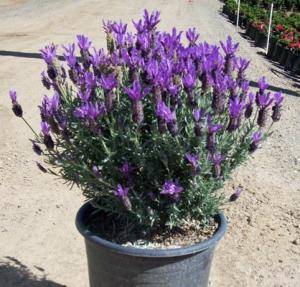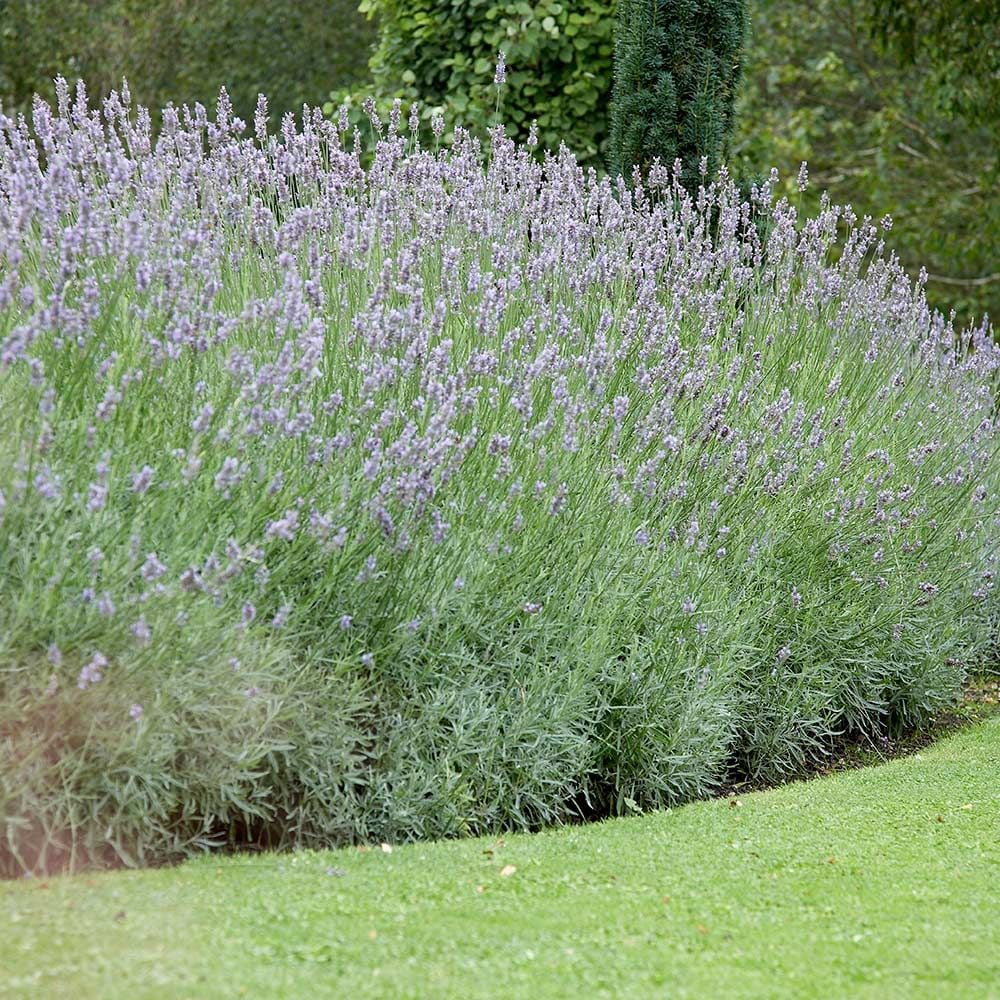GUIDE: Lavender
Lavender is a staple of gardens worldwide and one of my plants. There is so much to learn about it, but here are some of the interesting points I have picked up along the way, from my gardening notebook.
Scientific classification
Lavender has its own Genus - Lavandula, which sits within the mint family (Lamiaceae). Many of the plants in this family are aromatic herbs such as mint, thyme, rosemary, oregano, marjoram, basil etc.
Species
There are 47 species of lavender within the Lavandula genus.
Probably the most commonly seen in gardens is Lavandula Angustifolia, which is known as English Lavender. This has tall, thin, light-purple spikes.

The second most popular is probably Lavandula Stoechas, which is normally called French Lavender, but sometimes Spanish Lavender. This has thicker leaves and much shorter, more robust and decorative flowers.
 In commercial lavender growing, the most popular variety is Lavandula x intermedia 'Grosso'. This is a very large lavender, like English lavender in style but taller, with larger flowers. This explains why it is favoured by those who produce lavender oil and other products.
In commercial lavender growing, the most popular variety is Lavandula x intermedia 'Grosso'. This is a very large lavender, like English lavender in style but taller, with larger flowers. This explains why it is favoured by those who produce lavender oil and other products.

Hardiness
After growing some English and French Lavender successfully year after year, I planted four 'Ballerina' French lavender plants, with delicate white flowers. They flowered beautifully until early October, when a frost killed them completely. That was one failed investment I am not planning to repeat.
What people don't realise is that Lavender plant varieties cover the full spectrum of hardinesss*:
- 'tender' (cannot withstand any frost) - e.g. Lavandula rotundifolia which is native to the Cape Verde Islands.
- half-hardy (survives down to around 0oC but no lower - i.e. light frost) - e.g. Lavandula dentata var. candicans, which is native to Morocco.
- frost-hardy (can withstand temperatures down to -5oC) - e.g. Lavandula stoechas 'Ballerina' which is a hybrid created in New Zealand.
- hardy or 'full hardy' (can withstand remperatures of -15oC and below) - e.g. Lavandula x chaytoriae 'Sawyers', a hardy UK-produced hybrid.
Most lavender plants sold in UK retail garden centres will be hardy or frost hardy, but I have noticed some exceptions creeping in. In particualr be wary of exotic colours of lavender, which tend to be more susceptible to cold. On asking one garden centre why they stocked a variety which would die in the winter in the UK, I was told people should consider them as annuals.
* It should be noted that under the latest Royal Horticultural Society hardiness ratings, there are 9 subcategories of hardiness. The full table is available here.
Colours
Most lavender is a shade of purple, but there are also types with blue flowers, white flowers and there are even some yellow varieties (such as Lavandula viridis).

Notable varieties / cultivars
One of the best known cultivars is a form of English Lavender from a famous English garden - Hidcote.
Scientific classification
Lavender has its own Genus - Lavandula, which sits within the mint family (Lamiaceae). Many of the plants in this family are aromatic herbs such as mint, thyme, rosemary, oregano, marjoram, basil etc.
Species
There are 47 species of lavender within the Lavandula genus.
Probably the most commonly seen in gardens is Lavandula Angustifolia, which is known as English Lavender. This has tall, thin, light-purple spikes.

The second most popular is probably Lavandula Stoechas, which is normally called French Lavender, but sometimes Spanish Lavender. This has thicker leaves and much shorter, more robust and decorative flowers.


Hardiness
After growing some English and French Lavender successfully year after year, I planted four 'Ballerina' French lavender plants, with delicate white flowers. They flowered beautifully until early October, when a frost killed them completely. That was one failed investment I am not planning to repeat.
What people don't realise is that Lavender plant varieties cover the full spectrum of hardinesss*:
- 'tender' (cannot withstand any frost) - e.g. Lavandula rotundifolia which is native to the Cape Verde Islands.
- half-hardy (survives down to around 0oC but no lower - i.e. light frost) - e.g. Lavandula dentata var. candicans, which is native to Morocco.
- frost-hardy (can withstand temperatures down to -5oC) - e.g. Lavandula stoechas 'Ballerina' which is a hybrid created in New Zealand.
- hardy or 'full hardy' (can withstand remperatures of -15oC and below) - e.g. Lavandula x chaytoriae 'Sawyers', a hardy UK-produced hybrid.
Most lavender plants sold in UK retail garden centres will be hardy or frost hardy, but I have noticed some exceptions creeping in. In particualr be wary of exotic colours of lavender, which tend to be more susceptible to cold. On asking one garden centre why they stocked a variety which would die in the winter in the UK, I was told people should consider them as annuals.
* It should be noted that under the latest Royal Horticultural Society hardiness ratings, there are 9 subcategories of hardiness. The full table is available here.
Colours
Most lavender is a shade of purple, but there are also types with blue flowers, white flowers and there are even some yellow varieties (such as Lavandula viridis).

Notable varieties / cultivars
One of the best known cultivars is a form of English Lavender from a famous English garden - Hidcote.

.jpg)
Comments
Post a Comment